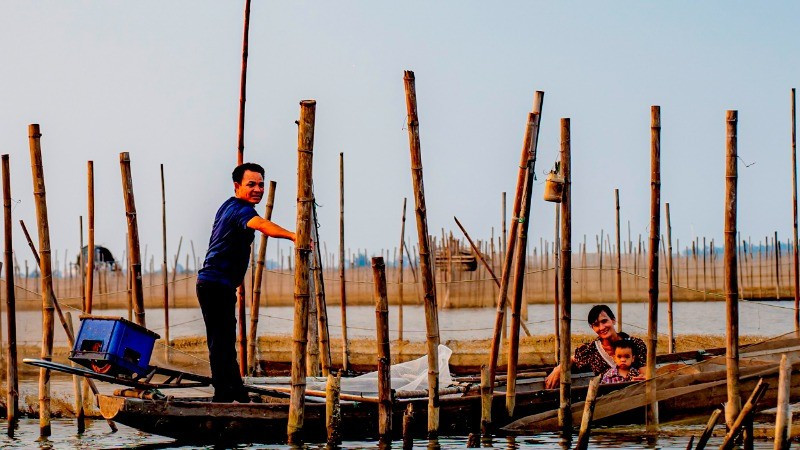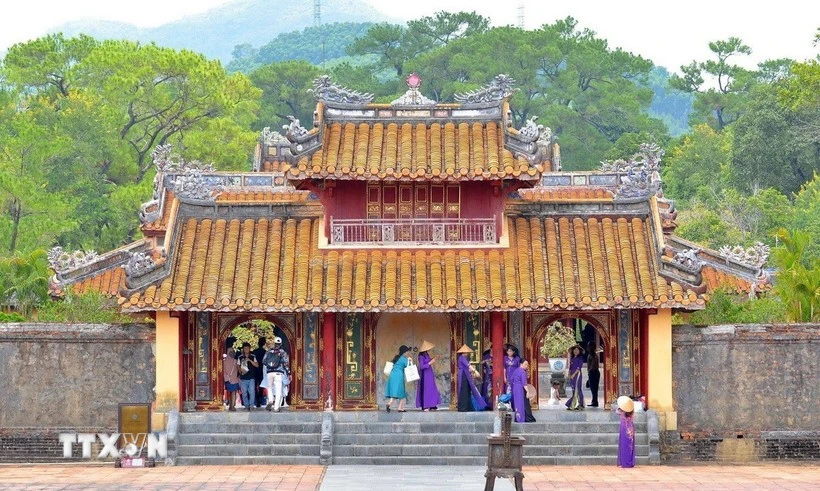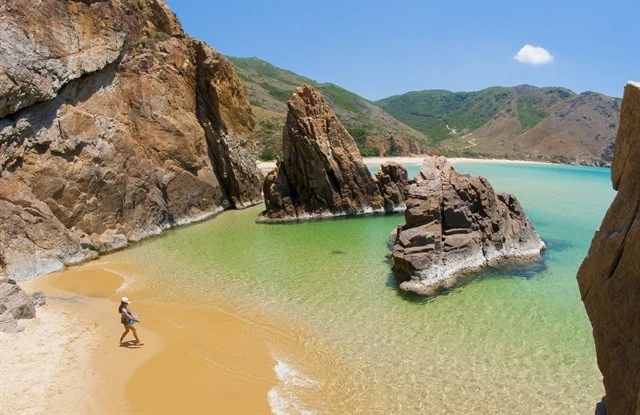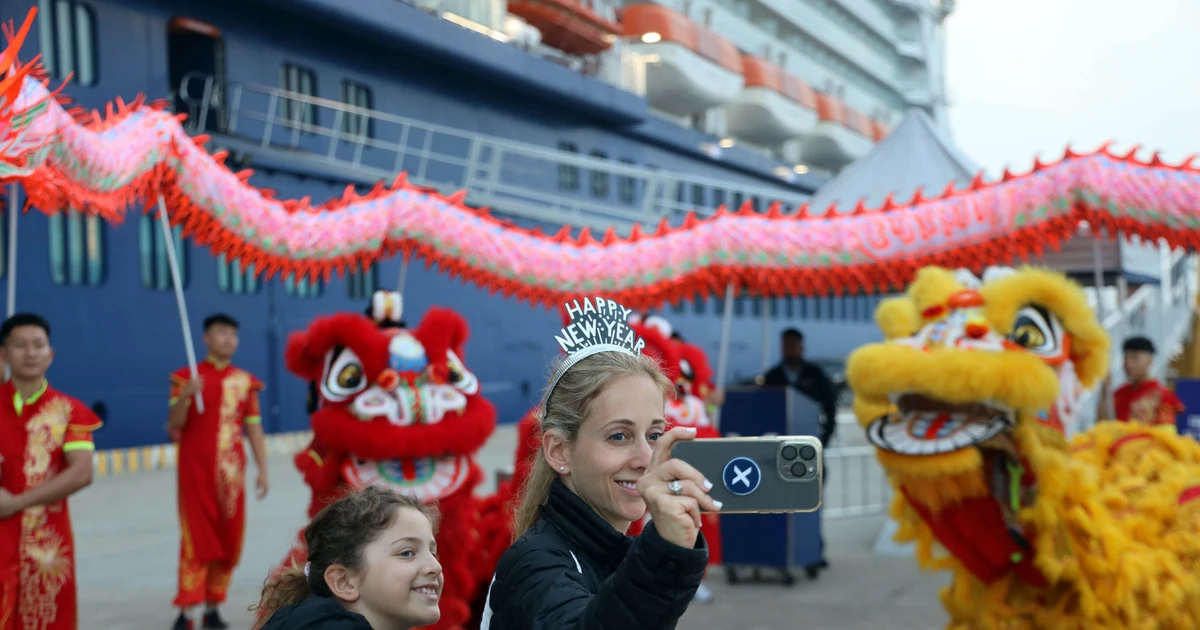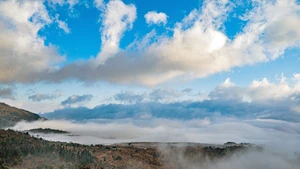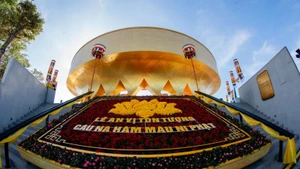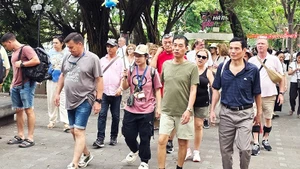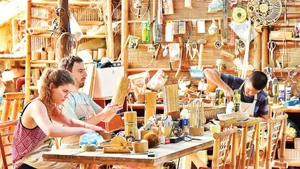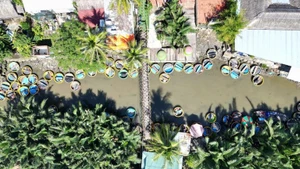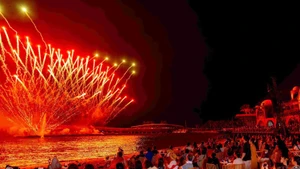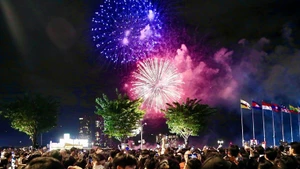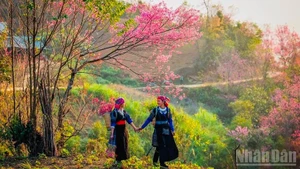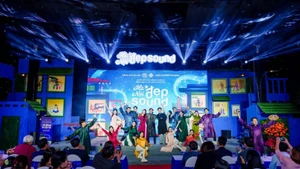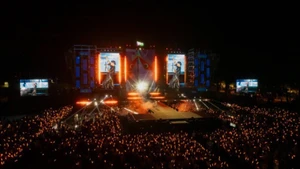Upon the surface of the water lies the tale of generations of Hue’s inhabitants—those who have lived their lives on boats and lagoons. To journey alongside the rivers, waters and skies of Hue is to behold its full beauty. Harnessing and elevating this beauty to turn this land into a captivating destination for tourists is something that should be prioritised and undertaken soon.
On an early morning boat ride upstream along the Huong River, with mist still lingering over the water, a young woman suddenly turned to ask the man beside her: “How many rivers do we have in Hue?” He pulled her close and replied with a smile: “Enough for us to spend a lifetime journeying.” The tenderness of that answer moved even the bystanders. I was on that boat too. And from that moment, I wondered: Could I truly navigate every meandering branch of Hue’s waterways, not just to see the place, but to understand it with my soul?
A part of Hue’s soul on the water
With the Huong River as its centrepiece, Hue is also home to the Bo River to the north and the Truoi River to the south. All these rivers flow towards the Tam Giang-Cau Hai lagoon system, where fresh waters blend with salt before reaching the sea. Along that journey, through centuries, the rivers have shaped unique communities—those who have spent their entire lives drifting on small boats, and those who dwell amidst the vast expanse of water.
Duong Cam Van, a long-time tour guide in Hue, often begins her tours of the former capital with a boat ride from Toa Kham Wharf heading upstream. Through stories of Lord Tien meeting the lady in a green blouse before founding Linh Mu Temple, through the tombs of Emperors Gia Long and Minh Mang… visitors are drawn into layers of historical memory, in a landscape of water that seems both real and dreamlike.
“Along the way, I often take guests to visit some small boats still moored at a bend near Kim Long. These are the “floating homes” of a few remaining boat-dwelling households. A mother cooks on an oil stove and proudly talks about her child who studied late into the night by lamplight, the soot blackening his nose. The father weaves fishing nets or mends the boat. On the roof hang baskets for chickens, and bunches of spring onions and garlic. A simple, humble, tidy life. Foreign visitors love it. They say there’s nowhere quite like it…,” Van continued.
The lives of local residents add vivid colour to Hue’s already evocative picture. Enchanted by the leisurely river journeys, some visitors forgo road travel, choosing instead a small boat ride down the Bo River to Bao La village, where artisans teach them bamboo weaving as souvenirs and share a rustic meal of grilled clariid catfish, fish sauce with ginger, taro stalks and pickled vegetables. These seemingly small experiences capture the essence of Hue—simple, but deeply resonant.
From the south, another journey begins on the Truoi River, leading to Bach Ma Truc Lam Zen Monastery, where visitors seek serenity amidst the clouds and sky. Many liken it to a smokeless Da Lat—a different Hue, yet still retaining its intrinsic quietude.
Awaiting discovery
At Cau Hai Lagoon—a part of the Tam Giang-Cau Hai system—many locals who once relied on fishing are now learning to live alongside tourism. Nguyen Van Ty, a resident of Vinh Hien commune, shared with a mix of pride and regret: “Visitors come to take photos, eat seafood, and then leave. But the stories of life on the lagoon—from building huts, weaving nets, to listening for the tide that brings in fish—no one has told them all.”
But Ty is not just telling stories. He wants to enrich the visitor’s journey with the lived experience of a man who once belonged to the water-dwelling community, who used to sleep on a wooden plank laid across the bow of a boat, beneath the open sky, cooking meals amidst the wind, and singing songs to lure fish at night.
“If we don’t tell our stories, then all visitors see is just open water. But if we find a way to let them stay and live as we once did, the trip would be so much more memorable,” Ty said.
Le Thi Mai, 78, formerly of the Kim Long water-dwelling community, recalled: “I gave birth, married, and thought I would die on the river. Now living in resettlement housing, I feel safer, but it’s so quiet. No more sound of water lapping against the boat, no more moonlight chasing the clouds…”
She added: “Back when I lived on the river, sometimes foreign tourists would visit my boat, and an interpreter would ask me to share stories. Whatever I told, they laughed—because our lives were so different, so new and strange to them. I once said that a week after my son married, the bride was still… a virgin. Why? Because the whole family slept together on the boat—it was tiny and had no privacy… The Western men laughed out loud. One woman even wiped away tears and asked to take a photo with me.”
A few years ago, a travel company launched a “Live Like Water-Dweller” tour. Visitors stayed overnight on a boat, hearing stories of drifting lives. But when the rainy season came, without a safe berth for the “floating hotel,” the tour had to end. The company, Cam Xuc Song Huong Cruises, still laments: “All we needed was a boat lock or a sheltered dock, and we could have revived a living memory of old Hue. Nothing fancy—just something real.”
Coming and living together
Hoang Khanh, a friend of mine who runs the “Slow Living” tour on the Huong River, lit up when speaking about a new itinerary: from central Hue, the boat sails to Bao La, then rows on to Tam Giang Lagoon, with dinner served in a hut, an overnight stay with water-dwelling locals, and dawn viewed over the lagoon.
Tuyet Mai, a history scholar who has researched the water-dwelling community, exclaimed as if she had been waiting for this moment: “Just let the water-dwellers people tell their own stories in their Hue accents, or sing songs about the fish they know by heart—visitors will be moved.”
I listened and recalled a Hue light festival held once on the Huong River, where strips of lights seemed to trace the curves of the water. Or another time, when lagoon cuisine was showcased on-site in a hut, using local ingredients, prepared by local people. Or an art workshop where artists lived on boats, painting and writing, then exhibiting right on the river. If such creative efforts were organised regularly and turned into full tour packages, they would become not fleeting events but “golden” products for Hue’s tourism.
Hue’s waters have long sustained its people, nurtured memory, and left their mark in poetry, music, and painting. But today, these same waters await a catalyst to become a sustainable tourism route—not only beautiful but also a source of livelihood and a living cultural heritage. To achieve this requires a clear, long-term strategy. Not just launching more tours or investing in infrastructure, but awakening the role of local residents—those who know the rivers as they know their own hearts.
Support mechanisms are needed to help water-dwelling communities become the central agents of tourism, not merely “scenic extras” in the broader picture. Their stories, crafts and customs are cultural resources—a kind of living heritage. Tran Thi Hoai Tram, Director of the Hue Department of Tourism, once said: “For river tourism to develop sustainably, the people of Hue must be woven into the product. Beautiful scenery can be found anywhere, but in Hue, it is the people and their way of life that make the difference.”
Looking ahead, Hue is building a strategy for tourism development aligned with green and night-time economies. If riverside villages become stopovers, and the lagoons host “local homestays,” then Ca Hue singing may not only echo on the Huong River but also be heard in fishing huts and floating shelters…
In tourism, nothing is impossible if it evokes emotion and touches the traveller’s heart. If that can be achieved, a new flow of tourism will take shape—gentle yet sustainable. A flow in which visitors do not merely look, but live with Hue. And Hue—just as it has always been—will continue to drift gently, ever inviting and ever profound.
